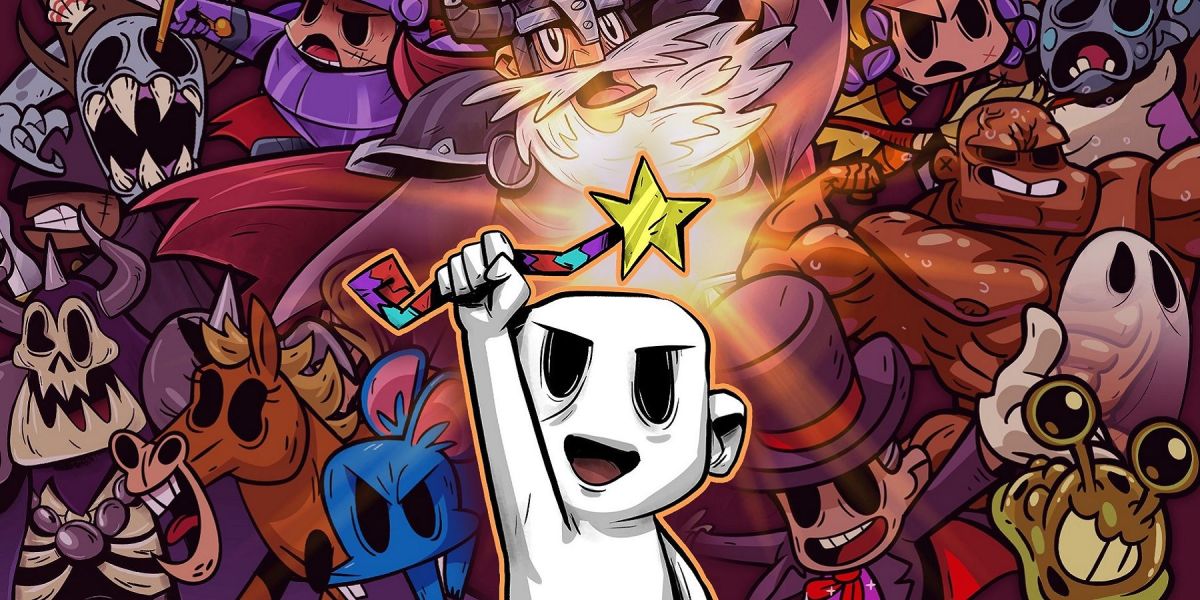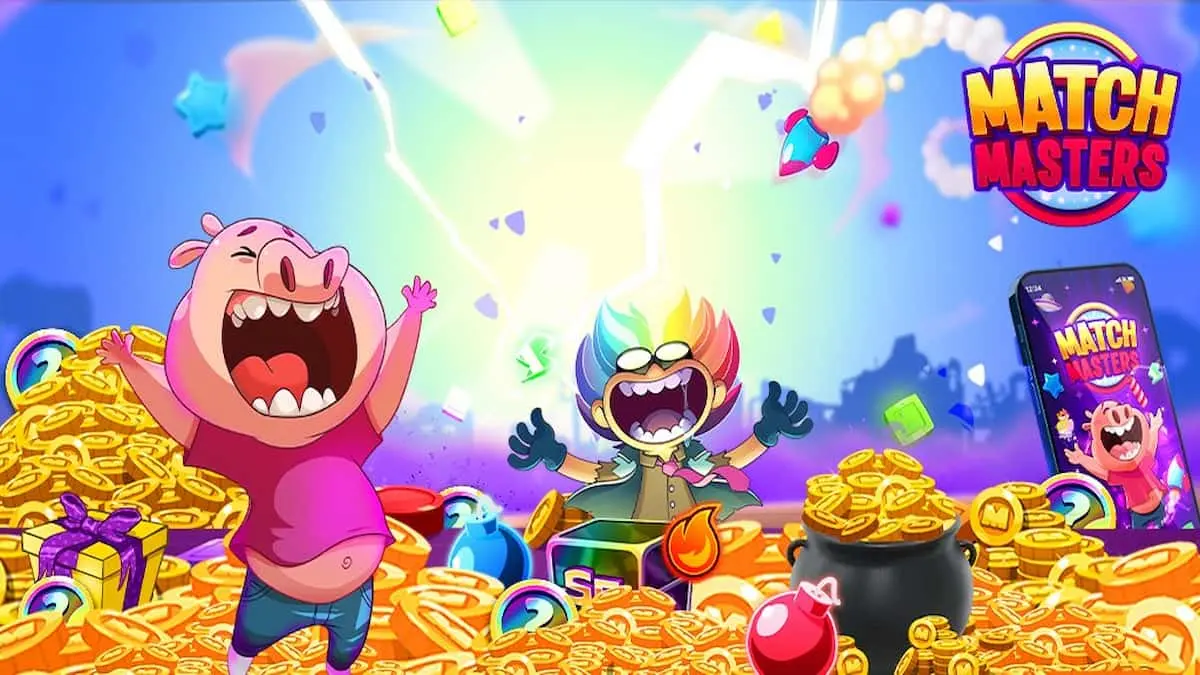You’re nobody ’til somebody cares
When I see a Drinkbox game, I turn my head to look at it: there’s no question. Guacamelee has pretty much cemented my love for them, and every project they’ve released so far has had some sort of unique hook to it that helps it stand out from the crowd. Nobody Saves the World plugs in a few safe notions of modern game design, but completely goes off the walls with it in a way that few game studios can truly muster.

Nobody Saves the World (PC, Xbox One, Xbox Series X)
Developer: Drinkbox Studios
Publisher: Drinkbox Studios
Released: January 18, 2022
MSRP: $24.99 (also on Xbox Game Pass)
As far as a quick rundown goes: Nobody Saves the World is kind of a take on a top-down Zelda, plus a mix of random dungeon concepts that have come into the forefront in the last five years or so. You star as the literal Nobody, who doesn’t have any latent powers (beyond a slow slapping animation). It’s a setup you rarely see often — shoutout to Lester the Unlikely on the SNES — and even if Nobody gets a magical transformation ability early on, you can still always go back to the Nobody slap-fight form.
You can see the bright Drinkbox pedigree as soon as the title screen. Nobody Saves the World injects a ton of personality into basically every facet of its being. The animation is fantastic: like something straight out of a Cartoon Network show, with characters who have exaggerated, over-the-top emotive reactions. The transformation aspect is baked into basically everything too. Quests can involve turning into an authority figure to get out of a jam or talking to a different animal species as that species. Many of these quests are like puzzles, where you’re expected to figure them out using a quick form change.
It’s really satisfying, as Drinkbox has created a deliberately-designed map to facilitate all of this. So the micro-dungeons (demi-dungeons, using the game’s terms) are randomized every time you enter them. But the big zones and the map itself are hand-crafted. It’s a great way for Drinkbox to put their stamp on the game, as the whole “the entire game is random” motif doesn’t always stick the landing.
Mechanically, Nobody Saves the World is also streamlined in a way that’s expected of Drinkbox action. Tapping a crystal on the world map saves your progress in an instant, with a clear clue telling you it went through. Attack animations are swift and simple, allowing you to generally do what you want whenever you want instead of relying on lengthy choppy animations like some top-down action games. They also went the extra mile to ensure that a horse shooting a ranger bow — or a knight doing a horse kick — doesn’t look too ridiculous as you start to mix and match powers.
Drinkbox’s lengthy experience designing action is evident from the very first form change you unlock: the rat. You start off with a simple chomp ability, which can be aimed as you “moonwalk” backward and dodge enemy attacks. Almost immediately you’ll get a “consume” power, which can [usually] instantly kill a foe after they’ve been chomped enough to apply a passive poison. As you continue through the game, you can grant that passive to another transformation (a Final Fantasy job, basically), as well as the other two abilities. It’s easy to understand with a small enough skill floor, but there are layers if you really want to dig into combat.
Speaking of that skill ceiling: the big hook is how you can combine forms. Every dungeon requires some form of pivoting, thanks to the rock-paper-scissors system of sharp, blunt, dark, and light attacks breaking “wards” (shields) on specific enemies. Given that you can freely customize transformations, I was constantly strategizing as to what combos would benefit each job in turn as I was progressing through the map. I ended up settling on a few comfortable playstyles, like using the horse to gallop around the world map, the knight for bosses, the monk for dungeons, the slug for giant groups; the list goes on.

In the very first dungeon, you unlock two more forms (the melee-centric guard [knight] and the bow and arrow-based ranger), and those have their own quests. It’s not only addicting to clear all these quests, but it also incentivizes players to try other transformations and at least attempt to unlock some early bonuses that spill over into other forms. One class is literally “an egg,” and your main questline is to warm yourself up through five different giant birds across the map to unlock a new transformation. The egg has passive and active abilities. It’s not afraid to get weird, yet functional! You start to notice things like the magician being suited for escort quests, as they can summon distractions and stun enemies, or start swapping between ranged and melee classes during specific boss fight phases.
Since quests also fuel the magic doors you need to open to progress in the game, it’s a win-win. Drinkbox clearly thought through how much progress funnels into everything. The game’s flow will turn some people off, to be sure. Your general goal is to clear quests (to unlock new forms and abilities), and conquer dungeons, as well as smaller demi-dungeons. The latter category is randomized, and a few bosses are reskins of other enemies. These two elements are really my only hangup with the game, as bosses are often the best reward for fine-tuning that perfect build you created — but if they operate really close to the enemies you’ve been fighting the entire time, you don’t need to adjust that much.
It’s the kind of thing where the foundation is so effortlessly refined, where I’d hope for a sequel to help cement a more varied delivery system for it. The silver lining is that there are so many quests that there’s more than enough options for earning the stars needed to unlock those dungeons. In most games, gating dungeons is an absolute chore and is often a cheap way to withhold progress. But here in Nobody Saves the World, since form quests, sidequests, and main quests all grant stars, it’s a lot less demanding.

Nobody Saves the World is around 12 hours if you just do the critical path dungeons that lead to the end; more if you go for sidequests and explore at your leisure. Full online co-op is also an option, as well as a New Game+ mode when you’re done. It’s pretty much all Drinkbox needed to add to keep things interesting beyond the first clear — you can go back into the randomized areas with a friend and have it feel relatively fresh.
I was a bit skeptical about Nobody Saves the World pulling off everything it tried to do, but it won me over very quickly. While the main questline lacks some meat on the bones at times, a lot of people will barely notice it as they unlock new transformations and start to mix and match old ones.
[This review is based on a retail build of the game provided by the publisher.]













Published: Jan 18, 2022 07:00 am